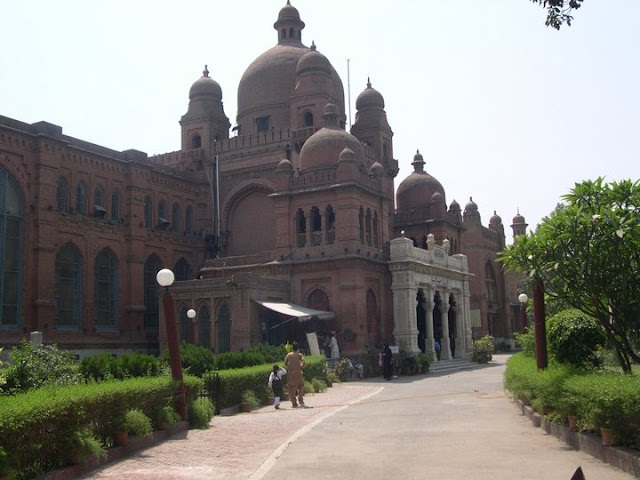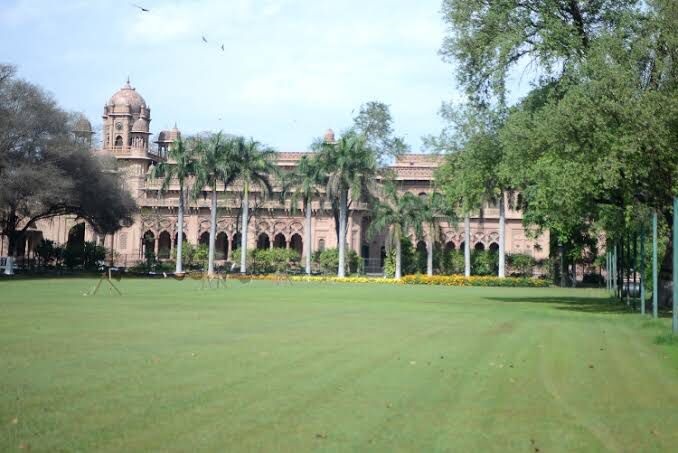Ganga Ram: The Father of Modern Lahor
April 26, 2022

General Post Office (GPO) Lahore
The Lahore as we all know and love, is the crown jewel of the Punjab, with its history, culture and rich heritage, would not be the same if it wasn’t for the efforts of one person in particular, Sir Ganga Ram. He is the icon of the city and is also known as the “father of modern-day Lahore”

Sir Ganga Ram
Sir Ganga Ram was an Indian civil engineer and architect, who changed the face of Lahore. He is credited with developing the General Post Office building, Lahore Museum, Aitchison College, Mayo College of Arts (now NCA) as well as the Hailey College of Commerce, and many other landmarks of modern Lahore. Sir Ganga Ram is also credited with other iconic landmarks of modern Lahore, including the Lahore High Court, the Hailey College of Commerce and the Lady Maynard Industrial School. Sir Ganga Ram’s work also extended beyond Lahore, to the powerhouse at Renala Khurd, as well as the railway track between Pathankot and Amritsar. He has left an indelible stamp on the city.
Sir Ganga Ram was an Indian civil engineer and architect, who changed the face of Lahore. He is credited with developing the General Post Office building, Lahore Museum, Aitchison College, Mayo College of Arts (now NCA) as well as the Hailey College of Commerce, and many other landmarks of modern Lahore. Sir Ganga Ram is also credited with other iconic landmarks of modern Lahore, including the Lahore High Court, the Hailey College of Commerce and the Lady Maynard Industrial School. Sir Ganga Ram’s work also extended beyond Lahore, to the powerhouse at Renala Khurd, as well as the railway track between Pathankot and Amritsar. He has left an indelible stamp on the city.

Lahore Museum
The story of Ganga Ram is entwined with the story of his beloved Lahore. Sir Ganga Ram was born in 1851 in Mangtanwala, about forty miles from Lahore and fourteen miles from Nankana Sahib. His father was a junior sub-inspector in the village, who later moved to Amritsar. Sir Ganga Ram graduated from Government College, Lahore in 1869, and then he went on to secure a scholarship to the Thomson Engineering College at Roorki in 1871. The British government then sent him to the UK to receive further training for two years, after which he returned to India.

Young Ganga Ram
In the mid-19th century, Lahore remained a city stuck in its glorious Mughal past. Amritsar had pulled ahead as the undisputed hub of the Punjab region, gaining a sizeable population by the time. The British Raj in India, however, was determined to ensure that Lahore emerged as a modern, attractive urban hub of British India.
Sir Ganga Ram was tasked with helping Lahore redefine itself, much like the colonial project in India following the 1857 War of Independence. For twelve years, Sir Ganga Ram served as the executive engineer of Lahore. The British expected that Lahore would become the symbol of the colonial state, showcasing what was considered to be the best vision and representation of the British rule in India.

National College of Arts (NCA), Lahore
This meant that the language of architecture would be used by Sir Ganga Ram to completely revamp the city of Lahore. This language would help convey the power, authority and grandeur of the British rule in India. The city would act as Sir Ganga Ram’s canvas, showcasing his talent as an architect and master urban developer, while echoing the imperial narrative of British Raj in India. A modern Lahore was born between the end of the 19th century and the beginning of the 20th century, in what is now referred to as the "Ganga Ram architectural period" (1891-1903), which has come to be known as Indo-Saracen architecture. Metaled roads, paved streets and iconic colonial architecture helped Sir Ganga Ram develop Lahore into the model city of the Punjab and the region.

Aitchison College, Lahore
Another major contribution to the infrastructure of the historic city is Sir Ganga Ram’s ‘lift irrigation system’, primarily deployed in Lyallpur (now Faisalabad), which converted thousands of acres of barren land into green land, fit for agriculture. The city of Lahore is also indebted to Sir Ganga Ram for an innovative waterworks system, which helped combat malaria and other water-borne diseases, which were already prevalent in the region. This helped the city of Lahore improve the health of its citizens, and raise living standards in British India to new heights.
This was Sir Ganga Ram, the brilliant architect. However, there is another side to this icon of modern Lahore that is not very well known. Sir Ganga Ram was also deeply empathetic, constantly concerned about the welfare of his fellow citizens in British India. Sir Ganga Ram was also an active philanthropist, setting up the Ganga Ram Trust. Under the Ganga Ram Trust, the Ganga Ram Hospital was founded in Lahore in 1921, aimed at providing quality healthcare to the people of Lahore.

Sir Ganga Ram Trust building
Sir Ganga Ram and his legacy live on, even to this day. Sir Ganga Ram did not only transform Lahore into a modern metropolis, but he was also a visionary and modernist, far ahead of his times. Through his work, he promoted the key values of diversity, inclusiveness, empathy, empowerment and progress. It may be argued that these values, much more than his architectural works, remain at the heart of Sir Ganga Ram’s legacy. His contributions have ensured that he remains a respected figure not just throughout the city of Lahore, but throughout the entire subcontinent, even decades after his death.